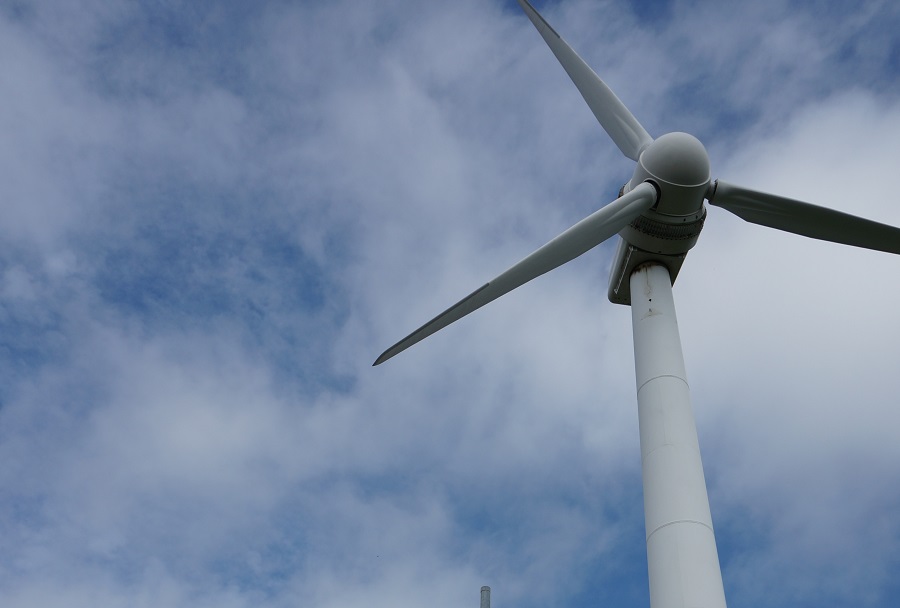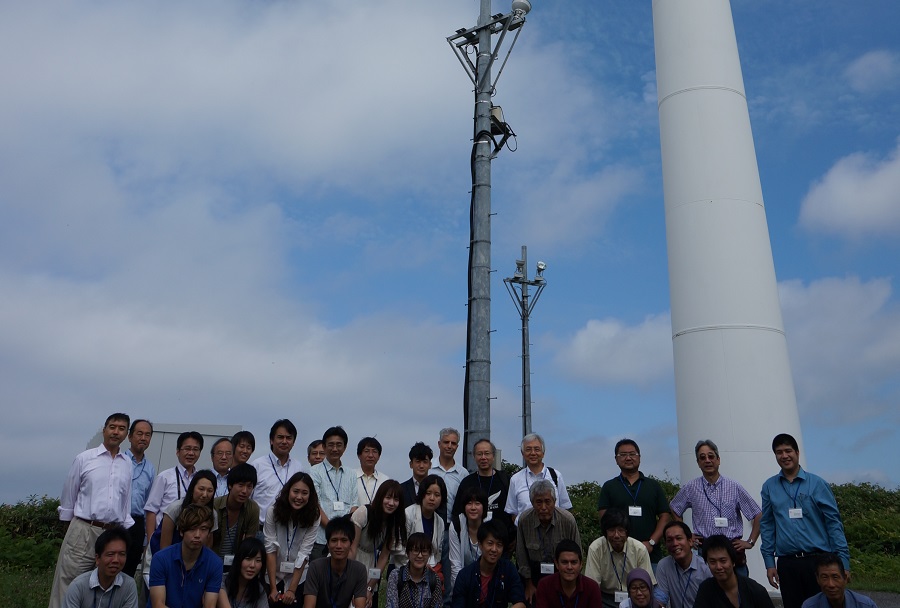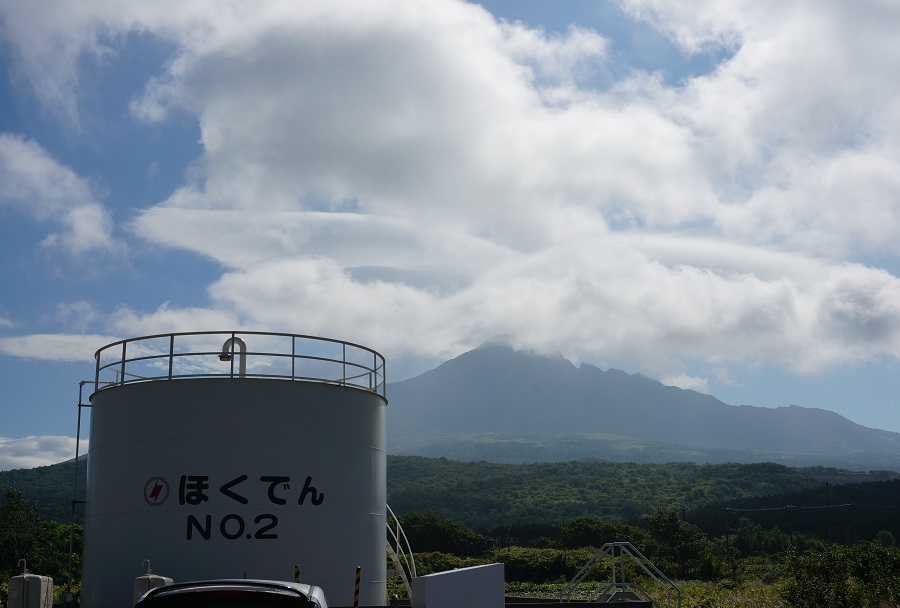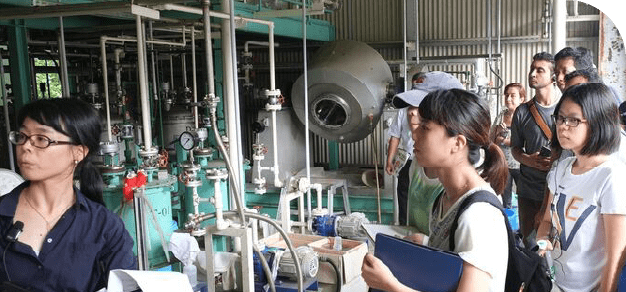GRM Students’ Reports
On-site Practice in Rishiri Island
Graduate School of Science and Engineering Jorge E. Lamas
2013/09/10
Practice period: 18-21 August, 2013
The Global Resource Management program led an On-site Practice in Rishiri Island in August 2013. Rishiri Island is located 20 km northwest of the main island of Hokkaido, Japan and has a declining population of 2,811 people as of 2013. Due to its small size and separation from the main island, Rishiri Island is not connected to the power grid and thus all energy has to be produced within the island. The objective of the On-site Practice was to assess the possibility of implementing renewable energy systems to improve the living standards of the community, and to reduce its current dependence on fuel shipments from the main island.
Photo : 250 kW wind turbine in Rishiri Island
The On-site Practice started with a tour of the power generating facilities. Currently, Rishiri Island counts with an electric generation capacity of 8,145 kW, which is obtained using three different energy resources. Diesel engine generators account for 7,650 kW of the total capacity, using a total of eight engines. Two micro-scale hydroelectric generators are available with a total generation capacity of 245 kW, and lastly, a single 250 kW wind turbine has also been recently installed. Out of the three power generation systems, hydroelectric power has the highest utilization factor, operating constantly throughout the year with only a slight decrease in output in winter. Diesel generators are the most reliable system, since they can be managed to quickly adapt to load variations. However, they are fully dependent on diesel oil, which must be constantly transported from Wakkanai to Rishiri Island by ship, and heavy storms might suddenly stop the transit of ships.
The power facilities tour was followed by a lecture with the municipal office of Rishiri Island, where the current state and future plans for infrastructure development were presented. A feasibility study of renewable energies in Rishiri Island showed that the most promising is wind energy, with an annual usable capacity of 6.7 TJ, followed by solar photovoltaics with 1.7 TJ. The current plan for replacing diesel generators with renewable energies is still, however, not enough to completely cover the energy demands in the island. Especially in winter when electricity is most needed, solar photovoltaics becomes less reliable due to shorter hours of sun and adverse weather conditions, such as cloud and snow over the panels. Since solar photovoltaics accounts for 15% of the installed power generation in the current plan, heavier dependence on diesel generators may be expected during this season.
The On-site Practice was complemented with lectures from invited guest speakers from the University of Philippines. Similar problems with energy infrastructure are present in the Philippines, due to being an archipelago country. The water and energy infrastructure industries in the Philippines were presented, as well as the major problems that have been faced. These insights were helpful to the students of the GRM program to analyze and discuss the current state of Rishiri Island and its capacity for social growth.
In conclusion, Rishiri Island does not face an easy situation in terms of replacing its power generation systems with renewable energies. Although the island still counts with several unused energy resources, its energy demands are mostly for heating, which is more complicated to obtain than electricity. The decrease in population also questions the justifiability of implementing this project, but nevertheless, the habitants of Rishiri Island have the right to demand improvement in their energy infrastructure. With careful planning, this project might bring benefits to the island in both reduced costs and energy independence.
Fieldwork








